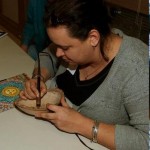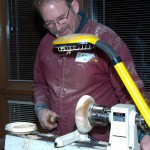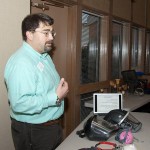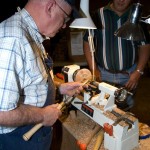The latest edition of the AAW Woodturning Fundamentals recently came out and here is a summary of what you will find:
- A question from Ferdinand about what he really needs to buy in order to be able to turn. Kurt Hertzog’s reply indicates that beyond access to a lathe, one can start pretty simply
- A question from Charles about turning an end-grain bowl from the entire width of a branch. Kurt replies with potential consequences and ways to deal with them
- Part II of Dealing with Green Wood by Joe Herrmann. In this article Joe explains the steps for turning a log into lathe ready blanks
- Part II of Setting Up Your Workstation by Rob Wallace. Rob covers adjusting the lathe itself and the area around it to match your body to your technique
- A couple of quick video tips – How to turn a Straight Cylinder & How to turn a Tapered Cylinder
Woodturning Fundamentals is a nice compliment to the bi-monthly American Woodturner, especially for those of us who are newer turners. This is just one more benefit of membership in the AAW.
You can sign up for Woodturning Fundamentals here.











